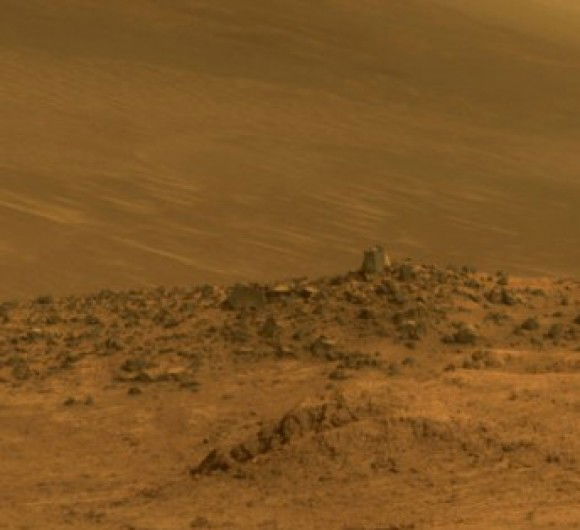Headlines
NASA's Opportunity Mars rover to explore fluid-carved gully

New York, Oct 8 In a first for a Mars rover, the Opportunity probe will drive down a gully carved long ago by a fluid that might have been water, according to the latest plans for the 12-year-old mission, NASA said.
"Fluid-carved gullies on Mars have been seen from orbit since the 1970s, but none had been examined up close on the surface before," Opportunity Principal Investigator Steve Squyres of Cornell University, Ithaca, New York, said in a statement.
The longest-active rover on Mars also will, for the first time, visit the interior of the crater it has worked beside for the last five years.
These activities are part of a two-year extended mission that began October 1, the newest in a series of extensions going back to the end of Opportunity's prime mission in April 2004.
Opportunity launched on July 7, 2003 and landed on Mars on January 24, 2004 (PST), on a planned mission of 90 Martian days, which is equivalent to 92.4 Earth days.
"We have now exceeded the prime-mission duration by a factor of 50," noted Opportunity Project Manager John Callas of NASA's Jet Propulsion Laboratory, Pasadena, California.
Opportunity begins its latest extended mission in the "Bitterroot Valley" portion of the western rim of Endeavour Crater, a basin 22 km in diameter that was excavated by a meteor impact billions of years ago.
Opportunity reached the edge of this crater in 2011 after more than seven years of investigating a series of smaller craters. In those craters, the rover found evidence of acidic ancient water that soaked underground layers and sometimes covered the surface.
The gully chosen as the next major destination slices west-to-east through the rim about half a mile (less than a km) south of the rover's current location. It is about as long as two football fields.
"We are confident this is a fluid-carved gully, and that water was involved," Squyres said.
"One of the three main objectives of our new mission extension is to investigate this gully. We hope to learn whether the fluid was a debris flow, with lots of rubble lubricated by water, or a flow with mostly water and less other material," Squyres noted.
The team intends to drive Opportunity down the full length of the gully, onto the crater floor.
The second goal of the extended mission is to compare rocks inside Endeavour Crater to the dominant type of rock Opportunity examined on the plains it explored before reaching Endeavour.
"We may find that the sulphate-rich rocks we've seen outside the crater are not the same inside," Squyres said.
The third main science goal of the new extended mission is to find and examine rocks from a geological layer that was in place before the impact that excavated Endeavour Crater.

23 seconds ago
Shamita Shetty works on her core as she performs Pilates with Halo

2 minutes ago
Ninety-five per cent of Jason Sanjay’s 'Sigma' completed, say makers

4 minutes ago
Aneet Padda to start 'Shakti Shalini' after giving her college final year exams

10 minutes ago
Mukesh Khanna says 'Glad to see that the essence is alive' as Shaktimaan Returns in a new avatar

11 minutes ago
Bhagyashrii Borse tells Dulquer Salmaan: You are an emperor of acting

14 minutes ago
Master Raju shares cherished throwback picture with late Asrani from ‘Uljhan’

18 minutes ago
Rasika Dugal unravels the evolution fabric of her ‘Delhi Crime’ character

19 minutes ago
FM Sitharaman holds first pre-Union Budget consultations with leading economists

21 minutes ago
From Jaipur to Coimbatore, 9 emerging markets drive corporate migration beyond metros

22 minutes ago
Hana Bank fined $12.3 million for mis-selling private funds

24 minutes ago
MP CM flags off inaugural direct flight from Rewa to Delhi

31 minutes ago
China’s lithium projects in Tibet a ‘quiet erosion' of the region's autonomy: Report

33 minutes ago
Bhutan gears up for PM Modi’s visit to further boost bilateral economic ties: Report






















